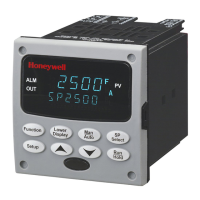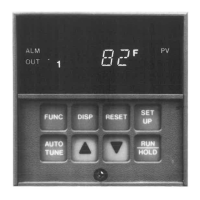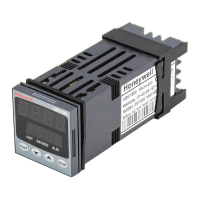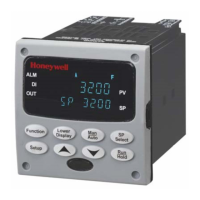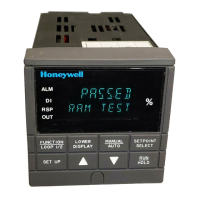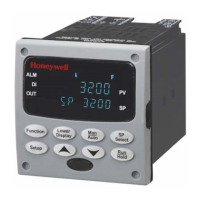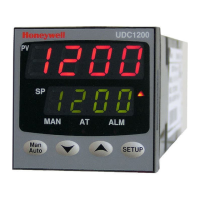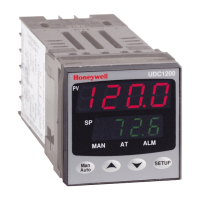154
Function
Prompt
Selections or Range
of Setting
Parameter Definition
Note 1: This Deviation Alarm is based upon deviation from whichever SP is active.
Note 2: Alarm 1 is not available if the Timer is enabled because Alarm 1 is dedicated to
Timer output.
Note 3: Loop Break monitors the control loop to determine if it is working. When
enabled, the control output is checked against the minimum and maximum output
limit settings. When the output reaches one of these limits, a timer begins. If the timer
expires and the output has not caused the PV to move by a pre-determined amount,
then the alarm activates, thus signalling that the loop is broken. The loop break timer
value must be configured by the operator as the AxSx VAL entry. This value is in
seconds with a range of 0 to 3600 seconds. A setting of 0 is equivalent to an
instantaneous loop break when the output reaches one of its limit values.
The amount of PV Movement required is determined by the “UNITS” setting in the
Display Setup Group. For the Degrees F configuration, the PV must move by 3 ° in the
desired direction in the time allowed. For the Degrees C configuration, the PV must
move by 2 ° in the desired direction in the time allowed. For the “NONE” selection, the
PV must move 1% of the PV range in the time allowed.
Loop Break alarms do not have a HIGH/LOW State configuration, they are always
assumed to be a HIGH state alarm.
Note 4: Thermocouple Warning means that the instrument has detected that the
Thermocouple Input is starting to fail. Not valid for other input types.
Note 5: Thermocouple Failing means that the instrument has detected that the
Thermocouple Input is in imminent danger of failing. Not valid for other input types.
Note 6: Alarm is triggered when the current SP is remote setpoint.
Note 7:
Event On: Alarm is set to on when the alarm (event) condition is met.
Event Off: Alarm is set as off when the alarm (event) condition is met.
NOTE: The alarm will not be reset after the event is finished.
Note 8: When the controller is configured for Three Position Step Control, alarms set for
Output will not function.
A1S1 Value Value in engineering
units
Alarm 1 Setpoint 1 Value —This is the value
at which you want the alarm type chosen in
Chapter 4 - Configuration
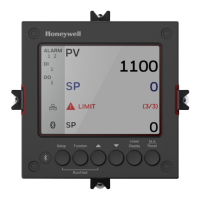
